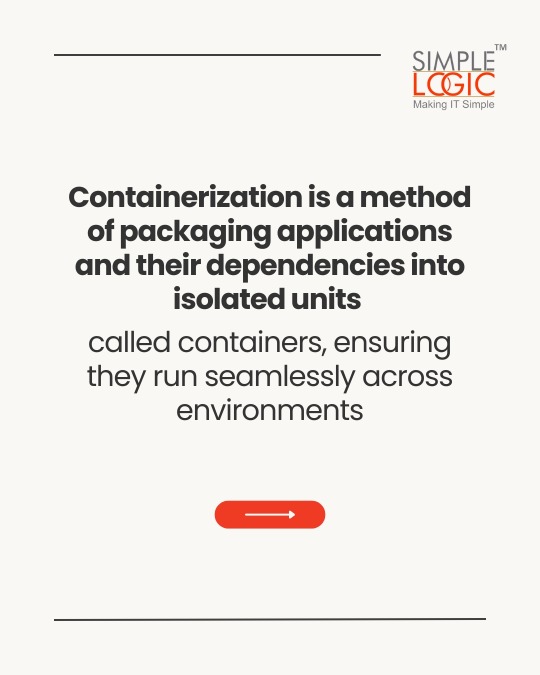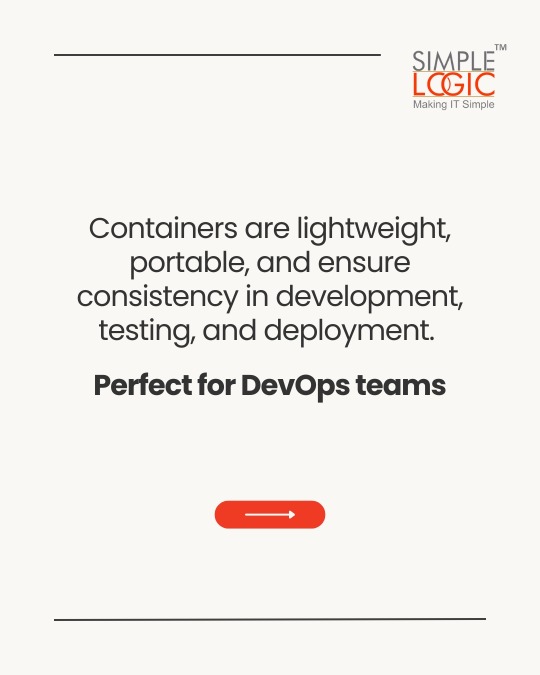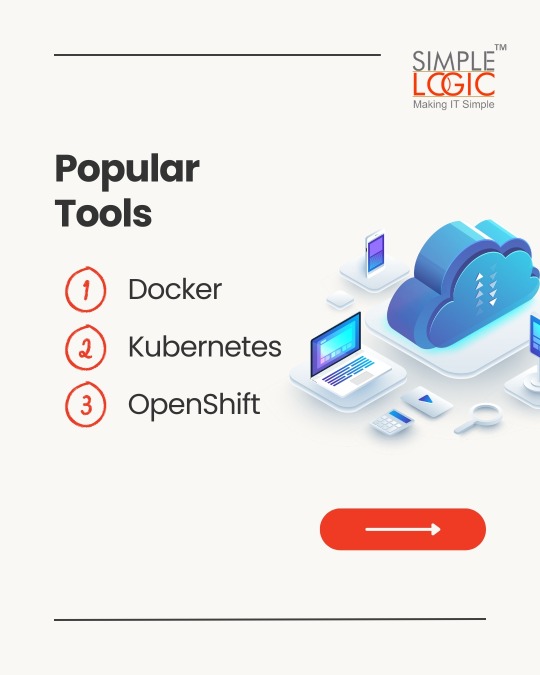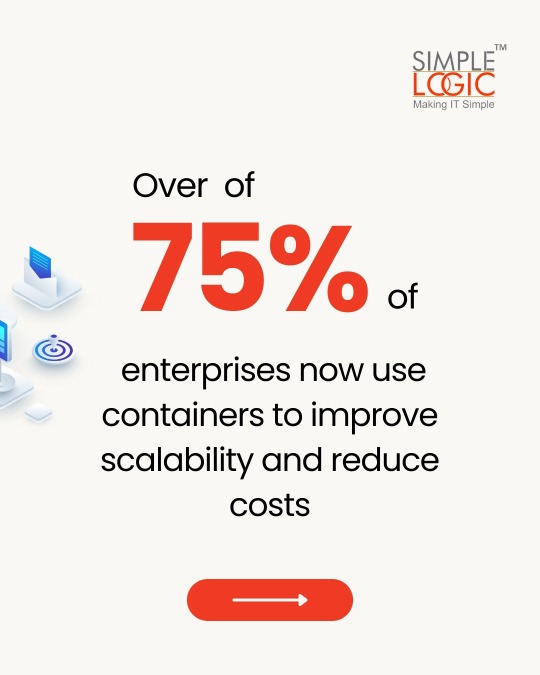#Application Security Testing
Explore tagged Tumblr posts
Text
Application Security Testing
youtube
0 notes
Text
Guarding Against Threats: Advanced Techniques for Application Security Testing
Explore advanced techniques in #applicationsecuritytesting to safeguard against evolving cyber threats and ensure the integrity of your software infrastructure.

#application security#application security testing#penetration testing services#cybersecuritytestingsolutions#cyber security#application testing
0 notes
Text
Compliance Gap Assessment: Bridging the Divide Between Compliance and Reality

In today's complex regulatory environment, businesses face increasing pressure to comply with a myriad of laws, regulations, and industry standards. Failure to meet these requirements can lead to hefty fines, legal repercussions, and damage to reputation. This is where compliance gap assessment comes into play.
Introduction to Compliance Gap Assessment
Compliance gap assessment is a systematic process of evaluating an organization's adherence to relevant laws, regulations, and internal policies. It involves identifying discrepancies between current practices and desired compliance standards.
Why Conduct a Compliance Gap Assessment?
Conducting a compliance gap assessment is essential for several reasons:
Identifying potential risks: By pinpointing areas of non-compliance, organizations can proactively address risks before they escalate.
Ensuring regulatory compliance: Compliance with laws and regulations is non-negotiable for businesses operating in various industries.
Improving operational efficiency: Streamlining processes and eliminating unnecessary steps can lead to cost savings and improved productivity.
Key Components of a Compliance Gap Assessment
A successful compliance gap assessment involves several key components:
Establishing objectives: Clearly defining the goals and scope of the assessment is crucial for focusing efforts and resources effectively.
Reviewing current policies and procedures: Evaluating existing policies, procedures, and controls provides a baseline for comparison.
Identifying gaps: Analyzing the differences between current practices and regulatory requirements helps prioritize areas for improvement.
Developing a remediation plan: Creating a detailed action plan ensures that identified gaps are addressed systematically.
Steps to Perform a Compliance Gap Assessment
Performing a compliance gap assessment involves the following steps:
Planning and preparation: Define the scope, objectives, and timeline for the assessment. Allocate resources and designate responsibilities accordingly.
Data collection and analysis: Gather relevant documentation, conduct interviews, and collect data to assess compliance across various areas.
Gap identification: Compare current practices against regulatory requirements to identify gaps and deficiencies.
Remediation planning: Develop a comprehensive plan to address identified gaps, including timelines, responsibilities, and resources required.
Implementation and monitoring: Execute the remediation plan, track progress, and make adjustments as necessary to ensure ongoing compliance.
Common Challenges in Compliance Gap Assessment
Despite its importance, compliance gap assessment can pose several challenges:
Lack of resources: Limited budget, time, and expertise can hinder the effectiveness of the assessment process.
Complexity of regulations: Keeping up with evolving regulations and interpreting their implications can be daunting for organizations.
Resistance to change: Implementing changes to achieve compliance may encounter resistance from stakeholders accustomed to existing practices.
Best Practices for Successful Compliance Gap Assessments
To overcome these challenges and ensure a successful compliance gap assessment, organizations should consider the following best practices:
Leadership commitment: Senior management should demonstrate unwavering support for compliance initiatives and allocate necessary resources.
Cross-functional collaboration: Involving stakeholders from various departments fosters a holistic understanding of compliance requirements and facilitates alignment of efforts.
Regular reviews and updates: Compliance is an ongoing process. Regular reviews and updates ensure that policies and procedures remain current and effective.
Case Studies: Real-world Examples of Compliance Gap Assessment
Healthcare Industry
In the healthcare sector, compliance with regulations such as HIPAA (Health Insurance Portability and Accountability Act) is paramount to safeguarding patient data and ensuring quality care. Conducting regular gap assessments helps healthcare organizations identify vulnerabilities and strengthen their compliance posture.
Financial Sector
Banks and financial institutions are subject to stringent regulations aimed at protecting consumers and maintaining financial stability. Compliance gap assessments enable these organizations to detect potential issues such as fraud, money laundering, and regulatory violations.
Manufacturing Companies
Manufacturing companies must adhere to a multitude of regulations governing product safety, environmental impact, and labor practices. Compliance gap assessments assist manufacturers in identifying areas for improvement and ensuring adherence to regulatory requirements.
Benefits of Conducting a Compliance Gap Assessment
The benefits of conducting a compliance gap assessment extend beyond mere regulatory compliance:
Risk mitigation: Identifying and addressing compliance gaps reduces the likelihood of fines, legal penalties, and reputational damage.
Cost savings: Streamlining processes and eliminating inefficiencies can lead to significant cost savings over time.
Enhanced reputation: Demonstrating a commitment to compliance and ethical business practices enhances trust and credibility among stakeholders.
Conclusion
Compliance gap assessment is a critical component of any organization's risk management and governance strategy. By systematically evaluating compliance across various areas, businesses can identify and address potential risks, ensure regulatory adherence, and enhance operational efficiency. Embracing best practices and leveraging real-world examples can help organizations navigate the complexities of compliance effectively.
FAQs (Frequently Asked Questions)
What is compliance gap assessment? Compliance gap assessment is a systematic process of evaluating an organization's adherence to relevant laws, regulations, and internal policies.
Why is compliance gap assessment important? Conducting a compliance gap assessment helps organizations identify potential risks, ensure regulatory compliance, and improve operational efficiency.
What are the key components of a compliance gap assessment? The key components include establishing objectives, reviewing current policies and procedures, identifying gaps, and developing a remediation plan.
What are some common challenges in compliance gap assessment? Common challenges include lack of resources, complexity of regulations, and resistance to change.
What are the benefits of conducting a compliance gap assessment? The benefits include risk mitigation, cost savings, and enhanced reputation.

#Compliance Gap Assessment#Risk Assessment#Vulnerability Assessment#"Application Security Testing & Penetration Services#Application Penetration Testing#Application Security Testing#Cybersecurity Compliance Preparation#Cybersecurity Program Support#Healthcare Cybersecurity Services#Cybersecurity Services for FinTech#HIPAA HITECH Compliance Certification#ISO 27001 Security Program
0 notes
Text
Tackling Mobile Application Security in Healthcare

View On WordPress
#application security testing#mobile Application OS Type#mobile Application Security#mobile applications in healthcare
0 notes
Text
Application Security Testing: All You Need To Know About
In today’s modern world, application security testing (AST) tools are now widely used due to the prevalence of software-related problems. It is expected that over 84 % of software breaches are caused by vulnerabilities in the application layer. Many IT leaders, software developers, engineers, and application testers may find it difficult to determine which application security testing tools will address which issues as the number of tools is growing daily.
The primary reason for using application security testing (AST) tools is that it takes a long time to manually review the code and traditional test plans, and as a result, new vulnerabilities continue to be found and introduced in the process. That’s where AST comes in, which automates the testing process and makes things easier to do through automation.
AST tools provide many benefits for testing applications, including speed, efficiency, and coverage; the tests they carry out are repeatable and scalable. Once a test case has been developed and written, it can easily be run on a large amount of code without significant incremental cost. Therefore, it is cost-effective too, and doesn’t take much time to initiate the process.
Well, in this article, we will be talking about application security testing, including its top benefits, process, best practices, types, tools, and techniques used in the process.
Let’s get started.
What is Application Security Testing?
Application security testing (AST) is the process of identifying security weaknesses and vulnerabilities in source code in order to make applications more resistant to security threats.
Initially, application security testing (AST) ran as a manual process, but as enterprise software became more modular, many open-source components were introduced over time. The AST process became more automated with the number of increasing vulnerabilities.
However, a lot of businesses use the combination of various application security testing tools to get more efficient and effective results.
Application Security Testing: Types and Tools
It’s practically checked that when you perform a dynamic scan, the tool will learn more about the application by looking at how it responds to different test cases: and when you perform a dynamic scan, the tool will learn more about how the application works.
This knowledge can be used to create additional test cases, which can then lead to gaining more knowledge, and so on. Traditional stand-alone DAST and SAST tools can be too time-consuming for Agile or DevOps environments, which makes IAST tools a good fit. They reduce false positives and work well in Agile and DevOps environments.
Let’s take a look at different types of application security testing (AST) and their uses for the application.
Static Application Security Testing (SAST)
Static Application Security Testing (SAST) tools utilize the white box testing approach which inspects application source code, scans static code, and displays security weaknesses.
Static testing tools are often used on non-compiled code to identify various issues, including input validation issues, math errors, syntax errors, invalid or insecure references, etc. SAST can also be applied to compiled code with the use of binary and byte-code analyzers.
Dynamic Application Security Testing (DAST)
Unlike traditional testing techniques, DAST tools execute code and inspect it in real time, determining security issues that indicate security threats and vulnerabilities.
This type of security testing is done to identify query string issues, requests and responses, script problems, memory leaks, cookie handling, third-party service execution, data injection, and DOM injection that can all affect the performance of your website.
In DAST tools, simulated test cases can be run on a large scale to reproduce unexpected or malicious behavior, and ultimately determine the response of the application.
Interactive Application Security Testing (IAST)
Like DAST tools, IAST tools also run dynamically and examine software while it is running, combining SAST and DAST tools to uncover an even broader range of security flaws.
Nevertheless, they can inspect compiled source code as IAST tools do, enabling them to identify sources of vulnerabilities and the lines of code that are affected.
This enables easy remediation of vulnerabilities. This type of testing is best suitable for API testing and helps to analyze source code, data flow, third-party libraries, and configuration.
Mobile Application Security Testing (MAST)
MAST tools are specially designed to study forensic data generated by mobile applications through static, dynamic, and investigative analysis.
In addition to testing for security vulnerabilities such as IAST, SAST, and DAST, mobile-specific issues include locating jailbroken devices, and malicious Wi-Fi networks, and protecting data on mobile devices.
Runtime Application Self-Protection (RASP)
Unlike SAST, DAST, and IAST, RASP tools can analyze application traffic and user behavior at runtime, detecting and preventing cyber threats. As with the previous generations of tools, RASP can analyze the source code of an application to find weaknesses.
RASP tools integrate with applications and analyze traffic at runtime, so they are able not only to detect security vulnerabilities but also to provide active protection, such as terminating sessions or sending alerts.
Implementing this type of in-depth inspection and protection during the runtime can help eliminate the need for SAST, DAST, and IAST, allowing security issues to be detected and prevented without requiring costly development efforts.
Software Composition Analysis (SCA)
Software Configuration Analysis (SCA) is the process of managing and securing open-source components. Developers use SCA to quickly track and analyze the open-source components that are deployed in their projects.
SCA tool is used to identify all essential components and libraries that support them, along with the direct and indirect dependencies. In addition to this, it helps determine vulnerabilities and provides recommendations for remediation for each of these components.
Application Security Testing: Best Practices
Security is important at every stage of the software development lifecycle, according to new organizational practices such as DevSecOps.
The AST tools can help developers understand security concerns and implement the best practices for security at the development stage.
It helps QA testers examine security issues at the early stage before the launching of the actual product.
More advanced tools such as RASP can help determine and prevent security vulnerabilities in source code while in production.
Test internal interfaces, apart from APIs and UIs
Applications are usually tested for application security using external threats such as user input provided through web forms or requests to public APIs.
Attackers often target internal systems with weak authentication or vulnerabilities once they have already penetrated security controls. It is imperative that internal systems are integrated, connected, and tested using AST to avoid such issues.
Test often
Thousands of components are used by enterprise applications, all of which may become obsolete or require security updates. As new vulnerabilities are discovered every day.
In order to make sure critical systems are protected and functioning as efficiently as possible, it is imperative to test them frequently, prioritize issues affecting business-critical systems, and allocate resources to remedy issues quickly.
Third-party code security
AST practices should be applied to all code used in an organization's applications, whether open-source or commercial. Organizations should never trust components from third parties for security reasons.
Therefore, you need to scan third-party code just like you do your own, and if you find severe issues, you can apply the latest security patches, speak with QA experts, or create a fix of your own.
Benefits of Application Security Testing
Many businesses invest in application security because applications power almost everything businesses do nowadays. Here are several reasons for investing in application security:
Eliminates the risks from internal and as well as third-party sources.
Makes customer data more secure and builds customer trust.
Helps protect sensitive data from leaks.
Improves trust from crucial investors and lenders.
Keep businesses off the headlines in order to maintain their brand reputation.
Application Security Testing: Techniques
An understanding of how client-server (browser) communication works through HTTP is required to prevent all of the above security testing threats/flaws and carry out security testing on a web application.
It would also require basic knowledge of SQL injection and XSS. Below are some of the most effective techniques used in performing quality security testing:
Cross-Site Scripting (XSS)
Testers must look into some additional checks on the web application for XSS (Cross-site scripting). Make sure that any HTML e.g. <HTML> or any script e.g. <SCRIPT> must not be accepted by the application.
If it happens, the application will be more likely to get vulnerabilities by Cross-Site Scripting, because attackers often use such methods to execute malicious scripts or URLs on a victim’s browser.
Ethical Hacking
A white-hat hacker is someone who uses hacking to identify potential threats on a computer or network to make it more difficult for black-hat hackers to break in. White hats suggest changes to systems, such as software patches, to make them less susceptible to exploitation.
On the other hand, a black hat hacker would exploit the vulnerabilities found within a system to gain access to sensitive information. Therefore, it is important to check whether the system is fully protected from such kinds of attacks.
Password Cracking
A hacker can access the private areas of the application by using a password-cracking tool or by guessing the common username and password of the application. In order to perform system testing, a password-cracking tool is essential.
There are open-source password-cracking applications available online that can decipher the password for you if you have a commonly used username and password.
The username and password of a web application are easy to decrypt until a complex password is enforced (e.g., a long password containing both numbers and letters). Another way to crack a password is to target cookies if the cookies aren't encrypted.
Penetration Testing
Penetration testing is the process of attacking a computer system in order to uncover security weaknesses and gain access to its functionality and data.
Risk Assessment
In this process, the organization will assess the possibility of the occurrence of losses and the risks involved with them. This will be determined through interviews, discussions, and analysis within the organization.
Security Auditing
It is a system of evaluating a company's information security by assessing its compliance with a set of standards.
Security Scanning
This program communicates with the web front-end in order to find out potential security threats and vulnerabilities within the web application, OS, and networks.
Importance of Application Security Testing (AST) for Businesses
A comprehensive security testing framework involves the evaluation of an application's security across all layers, including the infrastructure, network, and database of the application. It concludes by validating the application's exposure through testing the network as well as its database.
Due to the prevalence of today's cloud and multi-network applications, the security of applications is a fundamental concern. This makes the application less vulnerable to attacks and breaches and helps you run your business application more efficiently and successfully.
Final Thoughts
Thus, application security testing provides a number of advantages for businesses if they are implemented and performed the right way. To make your business up to the mark and running flawlessly, it is crucial to have the right application security testing employed in your business application. The more secure business you have, the more trusted customers you will get.
If you are experiencing some kind of security threats or vulnerabilities in your application or software and need help with implementing the right application security testing to make your application bug-free and more secure, we would recommend you contact one of the most prominent software application and testing service company named Crest Infosystems to get things done more efficiently.
1 note
·
View note
Text
Simplify Decentralized Payments with a Unified Cash Collection Application
In a world where financial accountability is non-negotiable, Atcuality provides tools that ensure your field collections are as reliable as your core banking or ERP systems. Designed for enterprises that operate across multiple regions or teams, our cash collection application empowers agents to accept, log, and report payments using just their mobile devices. With support for QR-based transactions, offline syncing, and instant reconciliation, it bridges the gap between field activities and central operations. Managers can monitor performance in real-time, automate reporting, and minimize fraud risks with tamper-proof digital records. Industries ranging from insurance to public sector utilities trust Atcuality to improve revenue assurance and accelerate their collection cycles. With API integrations, role-based access, and custom dashboards, our application becomes the single source of truth for your field finance workflows.
#ai applications#artificial intelligence#augmented and virtual reality market#augmented reality#website development#emailmarketing#information technology#web design#web development#digital marketing#cash collection application#custom software development#custom software services#custom software solutions#custom software company#custom software design#custom application development#custom app development#application development#applications#iot applications#application security#application services#app development#app developers#app developing company#app design#software development#software testing#software company
4 notes
·
View notes
Text
Web Application Security Testing
Web application security testing is the process of evaluating and identifying vulnerabilities, weaknesses, and potential threats in a web application's code, configuration, and deployment.
2 notes
·
View notes
Text
ugh i kinda wanna get back on tumblr and rot my brain out some more
#i’d probably mostly just still bitch about my family tho#and then dish n overthink on the polycule expansion pack that just dropped#kink club tales abound#didn’t see that one coming#still unemployed#broker than ever#paranoia is consistently present but manageable#social anxiety is getting lesser every day tho!! making friends is awesome and cool and epic#okay time to bitch about the fam#the level of misogyny/transmisogyny is ASTRONOMICAL since my moms bf moved in#like he’ll deadname/mispronoun ems and he didn’t even meet her until#until recently and she’s been transitioned for over two years like buddy you do not get the benefit of the doubt with a little ‘slip up’#here. you are being a malicious piece of shit on purpose!!!!! at least don’t be a pussy about it!!!!!!!#also big kudos to my mom on sharing ems dead name. really fucking classy.#my cats and my girls tie my sanity together with a spider’s spinner#thin and invisible they weave the net around me to keep me safe until i can pluck up the courage to get us the fuck out of here#should be able to pass a drug test soon so that opens up my application options a lot. i feel confident that i’d be able to hold myself#together long enough to get enough cash to put a security deposit down somewhere in the city#extra friends means the chance for roommates too!!!!!<333#only if i can be chillin in the nude in front of them tho. chances now are looking dece lol#ugh i’ve been manic dramatic for long enough tonight#hopefully it’s only the void i’m screaming at. i’m so damn lucky to have all that i have rn. especially the friends.#stick together with your local faggots and trannies always#ALWAYS<33#signed dogweed
4 notes
·
View notes
Text
Unlock the Power of Mobile: Transform Your Business with a Mobile Application!

In today's digital landscape, having a mobile application is no longer a luxury; it's a necessity for businesses that aspire to thrive and stay ahead of the competition. Wondering why you need a mobile app for your business? Allow us to reveal the remarkable benefits that await you:
There are 5 best advantages why you need to use Mobile App;
📲 Enhance Customer Engagement: Forge a Deeper Connection 📲
Imagine having a direct line of communication with your customers, right at their fingertips. With a mobile app, you can revolutionize customer engagement by delivering personalized offers, exclusive notifications, and real-time updates. Leave a lasting impression as you interact with your customers in a more direct, personal, and meaningful way.
💡 Boost Brand Recognition: Leave a Lasting Impression 💡
Consistency is key in building brand recognition, and a mobile app serves as a constant reminder of your brand's presence. By residing on your customers' mobile devices, your app will occupy a prime spot in their daily lives, reinforcing your brand image and increasing awareness. Be unforgettable and make a lasting impression with a mobile app that showcases your commitment to innovation.
🌟 Elevate the Customer Experience: Seamless and Convenient 🌟
In a world where convenience is paramount, a well-designed mobile app becomes a gateway to exceptional customer experiences. Seamlessly navigate through your products or services, offer user-friendly features, and provide a hassle-free environment that your customers will love. From streamlined purchasing processes to personalized recommendations, a mobile app empowers you to create an unrivaled customer journey.
⚡️ Stay Ahead of the Curve: Embrace the Digital Frontier ⚡️
In the race for success, having a competitive edge is crucial. Embracing the power of a mobile app demonstrates your commitment to innovation, technology, and customer-centricity. Stand out from the crowd and show that you're at the forefront of your industry. A mobile app propels your business into the future, giving you a distinct advantage over competitors who lag behind.
💰 Drive Revenue Growth: Tap into Lucrative Opportunities 💰
A mobile app opens up a world of revenue possibilities. Monetize your app through in-app purchases, subscriptions, or strategic mobile advertising. Seamlessly integrate your business offerings into the app, unlocking new avenues for revenue generation. Maximize your business's earning potential with a mobile app that caters to your customers' evolving needs and desires.
Ready to Unleash the Power of Mobile for Your Business?
Don't miss out on the endless possibilities that a mobile app can bring. Let our team of experts create a customized mobile application tailored to your unique business goals and objectives. Experience the game-changing benefits of increased customer engagement, enhanced brand recognition, superior customer experiences, and accelerated revenue growth.
👇 Take action now and secure your business's digital future! 👇
Contact Distance coding's expert solution today-
#mobileappdevelopment#mobileappdesign#mobile application security#mobile application testing#mobileapplicationdesign#mobile application services#mobile phone
2 notes
·
View notes
Text
Cloud Platforms Testing at GQAT Tech: Powering Scalable, Reliable Apps
In today's digital world, most companies use the cloud to host their software, store their data, and provide users with seamless experiences and interactions, meaning their cloud-based systems have to be fast and secure (it could be an e-commerce site, a mobile app, or corporate software platform) and be able to provide a robust reliable level of service that does not fail. All this hard work to develop a cloud-based application means nothing if the application is not subjected to testing and verification to work properly in different cloud environments.
Credit should be given to GQAT Tech for making cloud platform testing a core competency, as the entire QA team tests applications in the cloud, on cloud-based platforms, i.e., AWS, Azure, Google Cloud, or Private Cloud, while testing for performance, security, scalability, and functionality.
Now, let's explore the definition of cloud platform testing, what it is, why it is important, and how GQAT Tech can help your company be successful in the cloud.
What Is Cloud Platform Testing?
Cloud platform testing provides validation of whether a web or mobile application will function correctly in a cloud-based environment (as compared to on a physical server).
It involves testing how well your app runs on services like:
Amazon Web Services (AWS)
Microsoft Azure
Google Cloud Platform (GCP)
IBM Cloud
Private/Hybrid cloud setups
The goal is to ensure your app is:
Scalability - Will it support more users over time with no performance degradation?
Improve security - Is my data protected from being compromised/attacked?
Stability - Is it repeatably functioning (no crashing or errors)?
Speed - Is the load time fast enough for users worldwide?
Cost - Is it utilizing cloud resources efficiently?
GQAT Tech’s Cloud Testing Services
GQAT Tech employs a hybrid process of manual testing, automated scripts, and real cloud environments to validate/applications in the most representative manner. The QA team manages real-time performance, availability, and security across systems.
Services Offered:
Functional Testing on Cloud
Validates that your app will behave in an appropriate way while hosted on different cloud providers.
Performance & Load Testing
Validates how your app behaves when 10, 100, or 10,000 users are accessing it at the same time.
Scalability Testing
Validates whether your app is capable of scaling up or down based on usage.
Security Testing
Validates for vulnerabilities specific to clouds: data leak vulnerabilities, misconfigured access, and DDoS risks.
Disaster Recovery & Backup Validation
Validates whether systems can be restored after failure or downtime.
Cross-Platform Testing
Validates your application's performance across AWS, Azure, GCP, and Private Cloud Systems.
Why Cloud Testing Is Important
By not testing your application in the cloud, you expose yourself to significant risks such as:
App crashes when usage is highest
Data loss because of inadequate backup
Cloud bills that are expensive due to inefficient usage
Security breaches due to weaker settings
Downtime that impacts customer frustration
All of these situations can be prevented and you can ensure your app runs smoothly every day with cloud testing.
Tools Used by GQAT Tech
GQAT Tech uses advanced tools for cloud testing:
Apache JMeter – Load testing and stress testing
Postman – API testing for cloud services
Selenium / Appium – Automated UI testing
K6 & Gatling – Performance testing
AWS/Azure/GCP Test Environments – Real cloud validation
CI/CD Pipelines (Jenkins, GitHub Actions) – Continuous cloud-based testing
Who Needs Cloud Platform Testing?
GQAT Tech works with startups, enterprises, and SaaS providers across industries like:
E-commerce
Healthcare
Banking & FinTech
Logistics & Travel
IoT & Smart Devices
Education & LMS platforms
If your product runs in the cloud, you need to test it in the cloud—and that’s exactly what GQAT does.
Conclusion
Cloud computing provides flexibility, speed, and power—but only if your applications are tested and validated appropriately. With GQAT Tech's cloud platform testing services, you can be confident that your application will work as required under all real-world environments.
They will help eliminate downtime, enhance app performance, protect user data and help optimize cloud expenditure—so you can expand your business without concern.
💬 Ready to test smarter in the cloud? 👉 Explore Cloud Platform Testing Services at GQAT Tech
#Cloud Platform Testing#AWS Testing#Azure Testing#Google Cloud QA#Cloud Application Testing#Performance Testing on Cloud#Cloud Scalability Testing#Functional Testing on Cloud#Cloud Security Testing#Cloud-Based QA#GQAT Cloud Services#CI/CD in Cloud#Real-Time Cloud Testing#Cloud QA Automation#SaaS Testing Platforms
0 notes
Text
From Crisis to Confidence – Atcuality Restores More Than Just Code
Your website is your digital storefront. When it gets hacked, your brand reputation and customer trust are at stake. Atcuality understands the urgency and emotional toll of such breaches. That’s why our team offers fast-acting, reliable hacked site recovery services that not only fix the problem but prevent it from recurring. We clean your site, identify the source of the attack, and patch every loophole we find. With real-time updates and continuous support, you’ll never feel alone in the recovery process. We go beyond fixing bugs—we educate you about best practices, implement enterprise-grade firewalls, and monitor your website 24/7. Regain control of your site and peace of mind with Atcuality’s recovery experts.
#seo marketing#seo services#artificial intelligence#iot applications#seo agency#azure cloud services#digital marketing#amazon web services#ai powered application#seo company#web design#web development#website#websites#website development#website optimization#website design#website seo#ui ux design#website developer near me#website services#website security#website speed optimization#website developers#web developing company#web developers#software development#software company#software testing#software services
0 notes
Text
Why Security Testing Is a Must-Have in Your SDLC: Tools, Techniques, and Benefits
Security is not a checkbox at the end of your SDLC — it's a continuous discipline. By embracing security testing solutions early and consistently, you protect your applications, your users, and your business reputation. If you’re looking for a reliable security testing service provider, let Robotico Digital be your trusted partner. Our holistic approach to application security testing helps you innovate faster — without compromising on safety.
0 notes
Text
Mobile Application Penetration Testing in the UK: Safeguarding Your Mobile Ecosystem

Mobile applications serve as a crucial touchpoint between businesses and customers. With countless users now utilizing sensitive applications in banking, healthcare, ecommerce, and social networking, business mobile apps deal with enormous amount sensitive data. The ever growing usage of mobile devices increases the likelihood of cyber threats making mobile application penetration testing a necessity, especially for businesses in the UK.
This paper will discuss the process of mobile application penetration testing and the techniques used and needed by companies based in the UK. It will also highlight the most vulnerabilities commonly found on mobile applications as well as best practices in mobile application security.
What Is Mobile Application Penetration Testing?
Testing the security of a mobile application involves mimicking real world attacks. Mobile application penetration testing is doing just that. This form of testing aims to reveal security weaknesses in mobile apps, both Android and iOS, which cybercriminals could leverage to gain unauthorized access, data, or disrupt services.
When testing the security of mobile applications, the mobile applications testers employed both manual techniques alongside automated methods to evaluate client-side (UI, storage, code) and server-side APIs, databases, and authentication) components of the mobile application. The process is akin to everything a hacker would do in the active exploitation phase if they were attempting to compromise your application.
Why Is Mobile Application Virus Scanning Important to Businesses in the UK?
1. Increased Mobile Cybersecurity Attacks
Due to the increased use of mobile applications in the UK, hackers are on the lookout for apps that would grant access to sensitive personal and financial information. Reports indicate that mobile malware attacks and insufficiently secured mobile API interfaces are among the leading worries of security professionals.
2. Adherence to Governing Laws in the UK
Businesses within the UK are required to observe laws on data protection like the UK GDPR that offers strong protective measures when it comes to handling and processing personal data. It is important to note that routinely scheduled mobile app penetration testing will be able to make certain that the application is compliant with the laws avoiding sumptuary fines.
3. Safeguarding Brand Loyalty
Penetration testing ensures that potential problems are dealt with beforehand, avoiding needless unflattering publicity as well as loss of treasured brand equity. One mobile application flaw has the potential to put thousands of lives at risk, exposing such vulnerabilities usually leads to public relation disasters, negative press, and damage to brand equity.
Most Common Flaws in Mobile Applications
Following is a list of the most common gaps emerging from mobile app penetration testing:
Insecure Data Retention: The retention of sensitive information such as personal passwords or session tokens in easily accessible forms such as in text files on devices.
Ineffective Authentication Protocols: Other than absence of multi-factor authentication (MFA), poor session control is a contributing factor.
Insecure Communication: The use of encryption that is either absent or weak when encrypting the communication that takes place between the app and the server.
Reverse Engineering Risk: Possibility of attackers reverse engineering the application due to the absence of obfuscation in the code.
Insecure APIs: Exposed backend APIs which can be exploited for unauthorized access to data or functions.
Improper Platform Usage: The use of platform functionalities such as permissions, intents, or inter-process communications in a manner that was not intended.
Recommended Mobile Application Security Practices
As noted during penetration testing, businesses should take steps to fix vulnerabilities with the following suggested practices:
1. Protect All Sensitive Information With Encryption.
Encrypt all stored and transmitted information, data, or resources, including mobile application data, with strong encryption algorithms. Communication between the mobile application and the backend servers should be conducted using SSL or TLS.
2. Employ Strong Security Controls Related to User Authentication.
Implement multi-factor authentication, protective session handling with secure session maintenance, automatic log-out after idle timeouts for user accounts and sessions.
3. Obfuscate Mobile App Code
Weaknesses or secrets embedded in the app may be exploited by reverse engineering it. Attacks of this nature are made difficult through code obfuscation.
4. Secure APIs
Implement controls for access restriction base on proper validation commands and limit the number of permitted input rates to secure APIs from abuse.
5. Conduct Regular Penetration Testing
Penetration testing on mobile applications should be conducted routinely, especially after a significant code change or prior to introducing new features. Engage certified cyber security services to get thorough testing done.
The Best Cyber Security Companies for Mobile App Pen Testing in the UK
Should you wish to acquire Mobile Application penetration testing services within the United Kingdom, these companies come highly recommended:
1. NCC Group
NCC Group, as one of the world's foremost cyber security experts, provides thorough mobile application testing which includes source code review, dynamic analysis, and backend security review.
2. Redscan (now part of Kroll)
Redscan offers specialized penetration testing for both Android and iOS applications, addressing security loopholes and assisting organizations to fortify their mobile applications.
3. Falanx Cyber
Falanx offers tailored mobile security assessments and penetration testing with detailed reporting and strategic remediation guidance.
4. Cyber Smart
Cyber Smart serves SMEs specializing in automated compliance and security, offering assessments of mobile applications from the GDPR and Cyber Essentials compliance perspectives.
Conclusion: Mobile Pen Testing Is No Longer Optional
Mobile applications, when leveraged appropriately within a business, can propel the organization to new heights. However, they do bring with them additional avenues for potential attacks. As the UK continues to embrace mobile adoption, mobile application penetration testing is a fundamental practice that protects both users and businesses from critical breaches.
From thoroughly testing your applications, working with reputable cyber security companies, as well as dealing with weaknesses in a proactive manner, you not only safeguard sensitive information but also protect compliance as well as customer confidence.
What are you waiting for? We can help you defend your mobile applications with trusted penetration testing. Contact us today and we can discuss how to improve your mobile security posture.
#aws penetration testing uk#mobile application penetration testing uk#pen testing for mobile app uk#mobile app pen testing uk#penetration test application uk#Cloud Security Penetration Testing uk
0 notes
Text
2025/03/27 [#269] (runtime 00:52:43) Paris Marx is joined by Kate Green and Milo to discuss how Elon Musk’s DOGE is dismantling the US Digital Service and the consequences that has on really improving service delivery in government. Guest: Kate Green and Milo are former US Digital Service engineers.
Kate Green and Milo talk about specific projects, in detail, and the difference between developing tech as a public service and for profit. It's a great listen if you're at all curious about tech projects that went under the radar and a bit of what working on government tech projects can be like.
#doge#big tech#direct file for the irs was kate green's project#milo's description of a covid testing program they developed for schools during the pandemic just blew me away#a program that keeps track of all the test results and lets you submit those results to the state at the end?#do you understand how fucking amazing that is?#that's all we want - make the process easier#they get that#also everything they had to think of to make afghan translators/allies applications easier and secure#also gov workers just hitting them with the history of every time someone walked in promising to fix things
0 notes
Text
Smart Financial Management with Atcuality’s Cash Collection Tools
Businesses need reliable tools to manage their financial operations efficiently. Atcuality offers advanced fintech solutions, including an AI-powered cash collection application that ensures smooth and timely payment collection. This innovative tool helps businesses automate billing, generate instant payment reports, and send notifications to clients, reducing payment delays. With a secure platform that supports multiple payment options, companies can offer a hassle-free experience to customers while maintaining steady cash flow. Whether you’re a startup or an established enterprise, Atcuality’s technology-driven solutions are designed to support your financial goals with ease and security.
#search engine optimisation company#search engine optimisation services#emailmarketing#search engine marketing#digital services#search engine ranking#seo#search engine optimization#digital marketing#seo company#cash collection application#software testing#software company#software engineering#software#software development#developers#applications#opensource#software solutions#software services#software support#software security#software design#software developers#application development#application modernization#application process#app#app development
1 note
·
View note
Text






#TechKnowledge Have you heard of Containerization?
Swipe to discover what it is and how it can impact your digital security! 🚀
👉 Stay tuned for more simple and insightful tech tips by following us.
🌐 Learn more: https://simplelogic-it.com/
💻 Explore the latest in #technology on our Blog Page: https://simplelogic-it.com/blogs/
✨ Looking for your next career opportunity? Check out our #Careers page for exciting roles: https://simplelogic-it.com/careers/
#techterms#technologyterms#techcommunity#simplelogicit#makingitsimple#techinsight#techtalk#containerization#application#development#testing#deployment#devops#docker#kubernets#openshift#scalability#security#knowledgeIispower#makeitsimple#simplelogic#didyouknow
0 notes